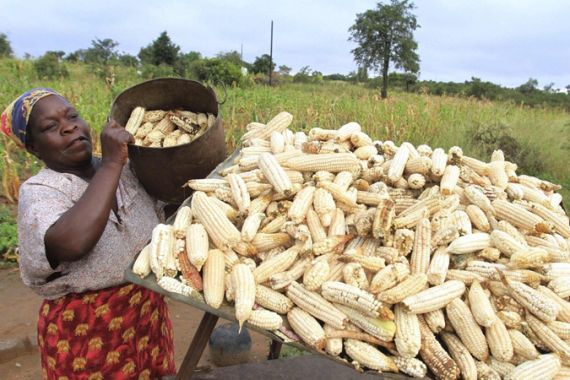The shadow of climate change reaches the kitchen
With the world population expected to rise, “we need to produce more food with less emissions”.

There are so many individual aspects of daily life in industrialised countries that are associated with the changing climate. We talk about energy efficiency with our automobiles, our air conditioners and other appliances, even the light bulbs over our kitchen tables.
But for the most part, the food served on the kitchen table has not yet joined the climate conversation, and it should. It is estimated that the food systems produce between a fifth and third of the greenhouse gases emitted by people on this planet.
Keep reading
list of 4 itemsThe Alabama town living and dying in the shadow of chemical plants
How India is racing against time to save the endangered red panda
Canada wildfires spur evacuation orders, warnings: What you need to know
This calculation includes every part of food production and distribution – including growing crops and raising livestock, manufacturing fertiliser and storing, transporting and refrigerating food. Agriculture accounts for around 80 per cent of these emissions, but the combined contribution of transport, refrigeration, consumer practices and waste management is growing as countries develop.
Climate-friendly food
While this news is not a complete surprise to most of us, we still do not shop for groceries according to emissions footprints. For example, if we want to reduce our greenhouse gas footprint, we should eat chicken instead of pork, and pork instead of beef.
While eating local foods has many advantages, in some circumstances we are better not to go local. For example, tomatoes grown in heated UK greenhouses result in six times greater greenhouse gases than those grown in the sun in Spain, even taking into account the emissions from transportation.
But will Londoners shop for meat and tomatoes according to greenhouse gases? It’s not included on the food label, so it’s not a decision point that’s readily available. Consumers would need to actively chase after this data, and the time to do this research is as much a luxury as the food choice available in northern supermarkets.
As you can see, the question of climate-friendly food is not the easiest one to tackle and one cannot blindly rely on market forces to carry the day. Making matters more difficult, the need to reduce the impact of food production on climate change is only one part of the crisis that we face. With the world population expected to rise by another one billion people in 15 years’ time, we need to produce more food with less emissions while adapting to changing climates.
The burden of this crisis does not fall, for the most part, in the kitchens of London. Rather, spin the globe to South Asia, with 300 million people currently undernourished, to Sub-Saharan Africa, with 234 million people in similar straits and to East and Southeast Asia, with 233 million people undernourished.
Under climate change, yields of maize, rice and wheat – the three largest sources of calories around the world – will decrease in many developing countries as temperatures rise and rainfall becomes more unpredictable.
Three-pronged crisis
By 2050, climate change could cause irrigated wheat yields in developing countries to fall by 13 per cent. Irrigated rice in these same countries could tumble by 15 per cent. In Africa, many farmers of maize, which is not that well suited to increased temperatures, could lose 10 to 20 per cent of their yields.
Many answers to this three-pronged crisis do not address all three; often times a past solution exacerbates another part of the problem. For example, synthetic fertiliser has been used with great success to increase crop yields. But fertiliser is also fingered as a key contributor to agriculture’s climate impacts.
Representatives of governments from all over the world are meeting at the Conference of Parties to the United Nations Framework Convention on Climate Change in Doha, Qatar. In years past, talks at this annual meeting have focused primarily on reducing emissions, an important problem that should have been tackled a decade ago. But the pace of climate change has far outstripped the pace of negotiations.
Delegates, while keeping a focus on reducing humanity’s greenhouse gas emissions, now desperately need to focus on adapting to the changing climate – how to grow more food is at the centre of this critical need. New methods and tools need to be implemented, technology to share innovations needs to be adopted and more research needs to accelerate the pace. Money must be spent to make this happen, to ensure our survival.
Most of all, political will must be found to confront the most important issue on our planet today. We can no longer afford to kick the can down the road.
Bruce Campbell is director of the CGIAR Research Program on Climate Change, Agriculture and Food Security (CCAFS). CCAFS is a sponsor of Agriculture, Landscapes and Livelihoods Day on December 3, which will bring together the natural resource and agriculture community to share concrete solutions for climate change adaptation and mitigation in agricultural landscapes with the aim of informing the UNFCCC negotiations.
